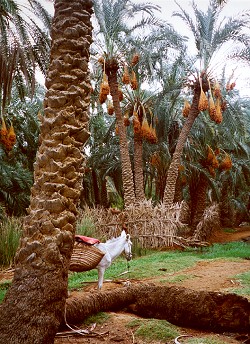
A natural depression about 65 kilometres southwest of Cairo. It covers an area of about 12,000 square kilometres. It is the only oasis in the western desert which is directly supplied with water by a branch of the Nile. Part of the Faiyum consists of a large lake, which in prehistoric times contained salt water; this lake has gradually decreased in size and now contains fresh water. In ancient times the Faiyum was called after this lake: 'Ta-she', 'Land of the Lake'. The Coptic translation of this, 'Pa-yom', can be heard in the modern name. There was human inhabitation as early as the Palaeolithic period (the earliest inhabitants are sometimes called the Faiyum B and the Faiyum A groups), but only in the Middle Kingdom (12th Dynasty, from Amenemhat I on) was the oasis really made habitable with the introduction of a system of water control with pumps. Amenemhat III tackled the problem on an even larger scale with the construction of a regulator near Lahun. Particularly in the 12th Dynasty, when the residence was situated near Lisht, close by, the Faiyum was a popular hunting area. Diodorus records that the legendary king Menes apparently hunted here and was attacked by his own dogs; he was saved by a crocodile and as a thank-you built a shrine to the crocodile and founded the town Shedet, which later became the capital Crocodilopolis; both Herodotus and Strabo visited this city. In the Greek period, Ptolemy II rechristened the city Arsinoë and the whole region the Arsinoitic nome after his marriage to his sister Arsinoë.
There are many temples in the area, mostly from the Graeco-Roman Period and dedicated to one or more crocodile gods. Near Karanis, for example, are two temples, one dedicated to Sobek and Isis and the other to Pnepheros and Petesouchos (two local forms of the god Sobek). In Narmouthis is a temple dedicated to Sobek and the deified king Amenemhat III of the Middle Kingdom. Other buildings in or near the Faiyum include the pyramid complex of Amenemhat III at Hawwara and the pyramid complex of Senwosret II at Lahun, with their associated tombs. In one of them, the tomb of a princess, many priceless pieces of gold jewellery were found. The finding of a papyrus archive at Philadelphia, a city founded by Ptolemy II, is also worth mentioning. It belonged to Zenon, the overseer of the lands of the treasurer of Ptolemy II. These texts supply a great deal of information about the administration and social life in the time of Ptolemy II.